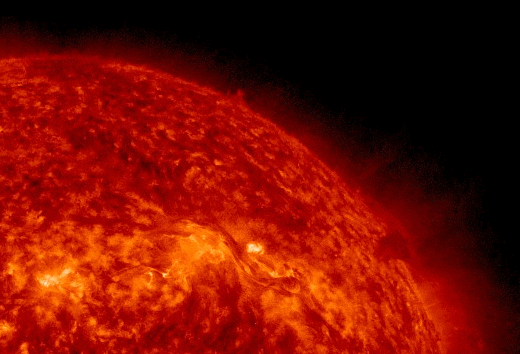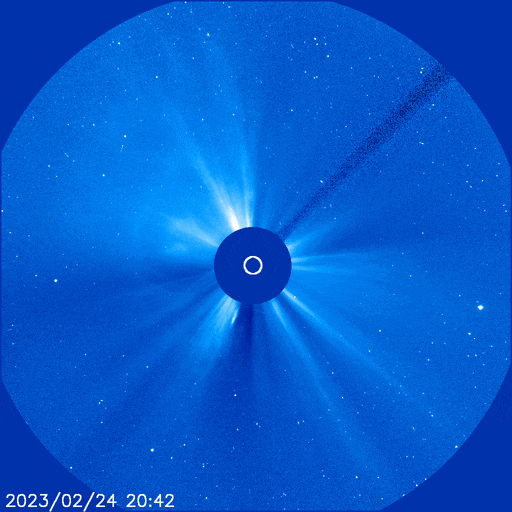Feb. 25, 2023: A magnetic filament connected to sunspot AR3229 erupted on Feb. 24th, producing a chain reaction of events that could lead to a geomagnetic storm on Earth. The action began at 1949 UTC when the filament rose up and sliced through the sun’s atmosphere:

The violent liftoff destabilized sunspot AR3229, sparking a long duration M3-class solar flare (2030 UTC). Radiation from the flare, in turn, ionized the top of Earth’s atmosphere, blacking out shortwave radio transmissions around the Pacific Ocean: map. Mariners and ham radio operators may have noticed loss of signal at frequencies below 25 MHz for as much as an hour after the explosion.
Next, a CME emerged from the blast site. Coronagraph images from SOHO show a lopsided halo with an Earth-directed component:

Type II solar radio emissions from the leading edge of the CME suggest a departure speed of 1200 km/s (2.7 million mph). The flank of the fast-moving cloud could reach Earth on Feb. 27th. NOAA analysts are modeling the CME now, so stay tuned for a refined forecast.
There’s more: Shock waves inside the CME accelerated protons to nearly light speed, and they have already reached Earth. Our planet’s magnetic field is funneling the particles toward the poles where a second type of radio blackout is underway–a polar cap absorption (PCA) event. Airplanes flying over these regions may find that their shortwave radios won’t work due to the ionizing effect of infalling protons: map.
This story was brought to you by Spaceweather.com